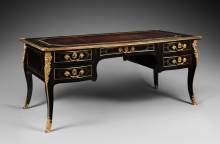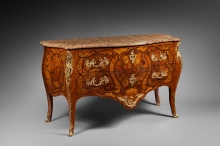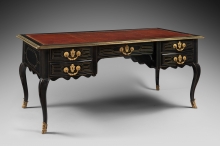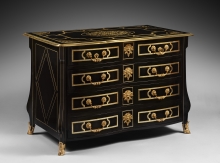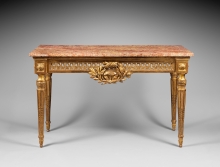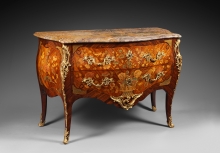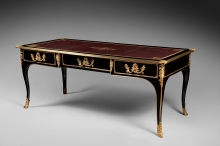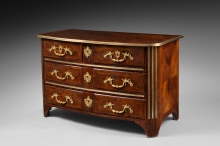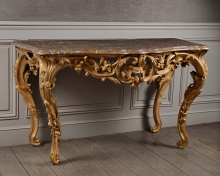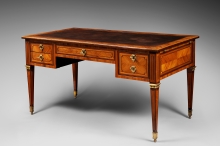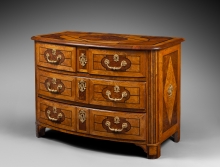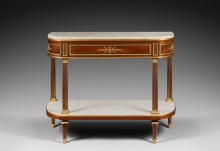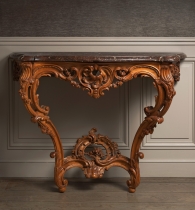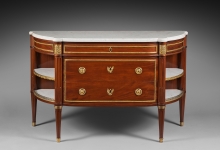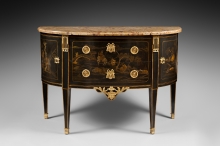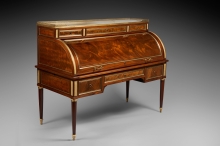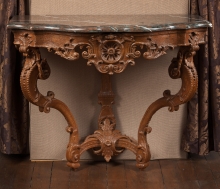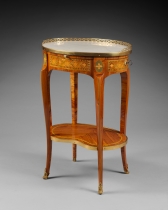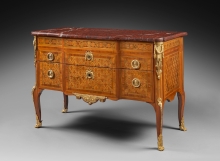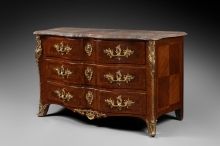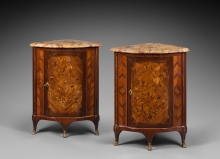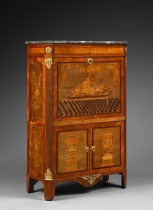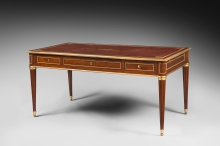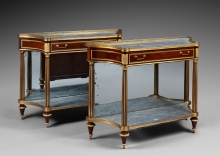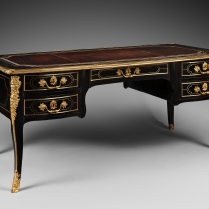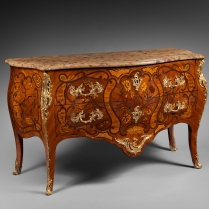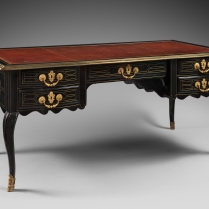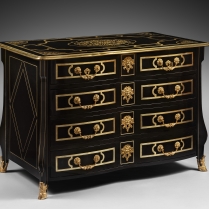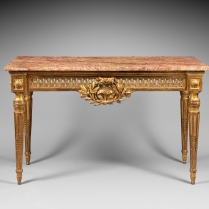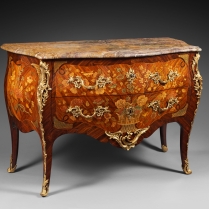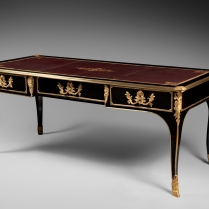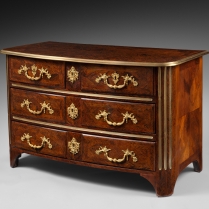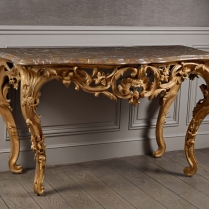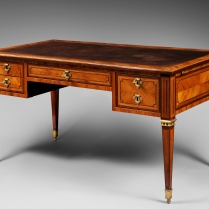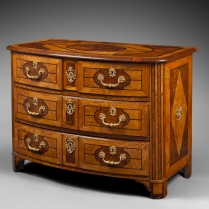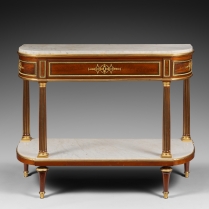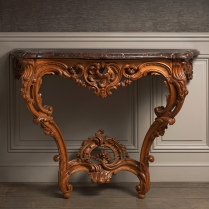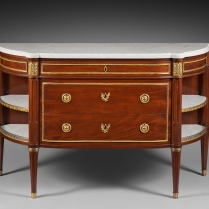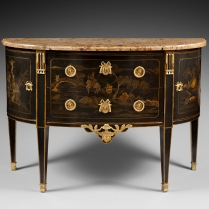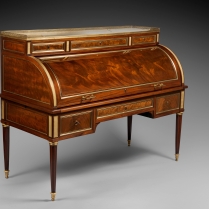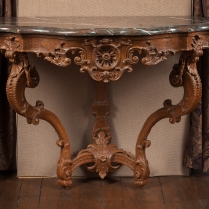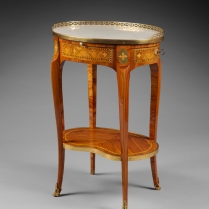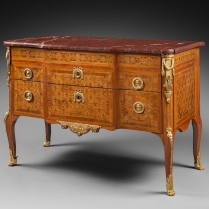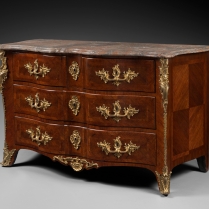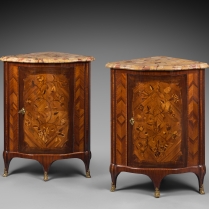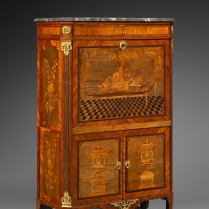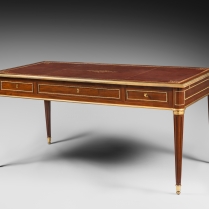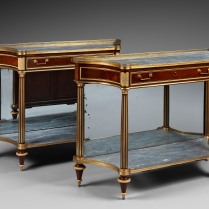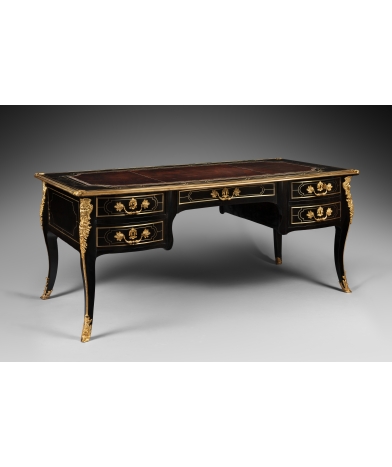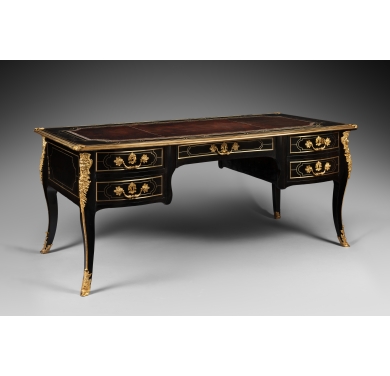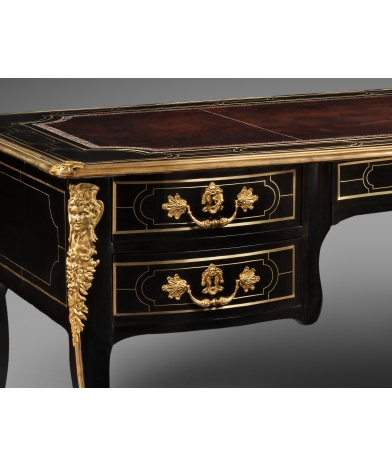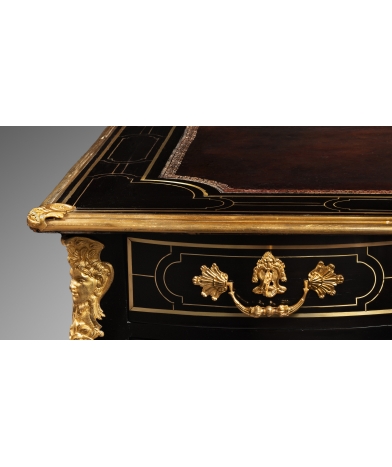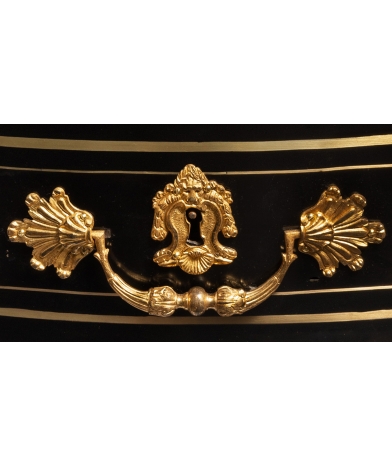French Regency Period, Ebony Desk
Dimensions : H: 79cm, W: 180cm, D: 90cm
This magnificent ebony desk was made in Paris during the Regency period or in the very early years of the reign of Louis XV. It draws its powerful volumes from the previous century, but the arched legs give it an already clean and modern line. As such, this desk perfectly reflects the transition from the Louis XIV and Louis XV periods, which characterizes the French Regency. It is veneered in a very beautiful ebony on the top and fronts, the sides being veneered in ebonized pearwood.
The bronze ornamentation is extensive, including superb female figures for the falls, beautiful mascarons at the corners of the ingot mold, sabots, and falling handles still fully anchored in the Louis XIV ornamental style. The chiseling is fine, with later gilding. Above, a top features a very beautiful antique leather, dark garnet in color, in particularly wide veneer reserves and with powerful spandrels. The inlay of the copper threads is precise, creating an elaborate geometric design that fits perfectly with the volumes and ornamentation of the bronzes. An important sign of quality is the recessed central drawer, which gives rhythm to the front and, at the same time, provides greater comfort for the user.
The discerning eye will notice the wavy line of the front, drawn by curved boxes and a recessed central drawer. Whether in the ebony veneer, the bronzes, or the copper threads, this important desk is perfectly crafted on all four sides; the false drawers on one of the long sides are completely undetectable, such is the perfection. Inside the drawers, the same exacting standards are found, with fine grooves perfectly executed in wide walnut planks.
This desk has just undergone a complete restoration. It is in perfect condition, with almost all of its original veneer remaining. The structure, the foundations and the bronzes are all original.


